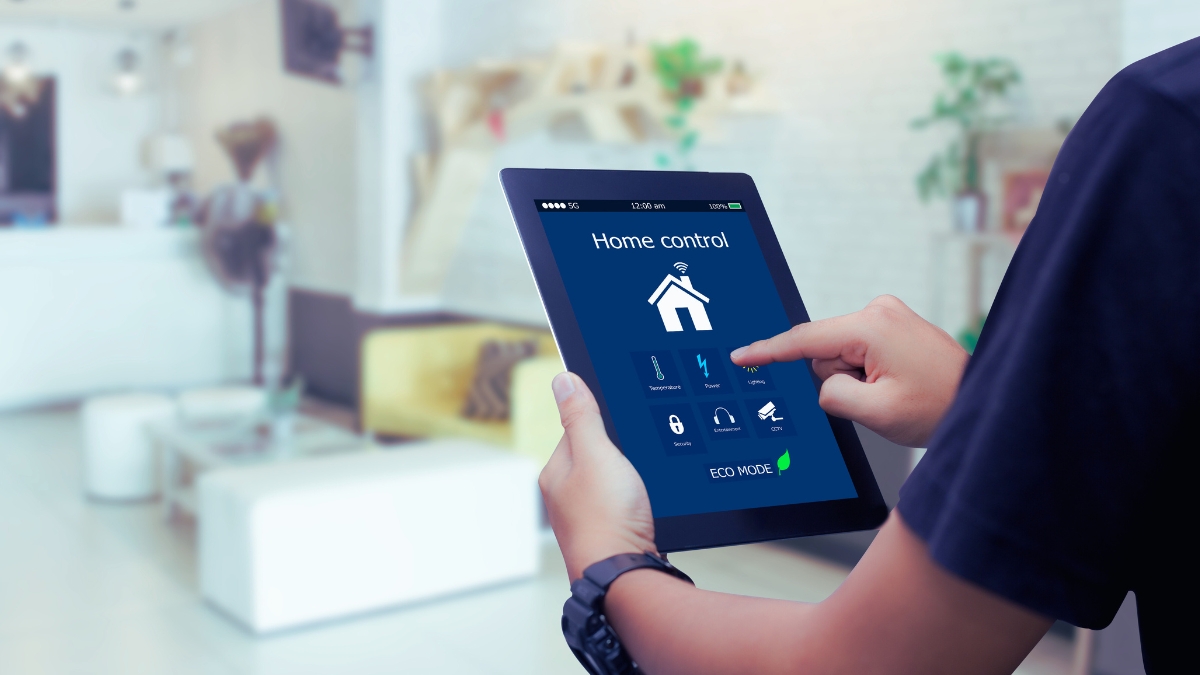Draining your bank account faster than a power surge? Tired of feeling like your house is a money pit? What if your home could actually help you save cash?
Believe it or not, with a few smart tweaks, your ordinary abode can become a secret weapon in your fight against financial foes.
Intrigued? We’re about to reveal 15 unconventional ways a smart home can slash your bills, prevent costly disasters, and even score you discounts.
From catching sneaky energy vampires to stopping floods before they start, this list is packed with money-saving surprises that might just leave you saying, “Why didn’t I do this sooner?”
1. Automated Energy Management
Automated systems intelligently manage your home’s energy use, reducing unnecessary consumption and lowering your bills. Sensors and timers ensure that lights and appliances are only on when needed. Over time, these small adjustments add up to significant savings.
2. Smart Thermostat Adjustments
Smart thermostats learn your schedule and adjust temperatures automatically for maximum efficiency. By optimizing heating and cooling based on your habits, they ensure comfort without wasting energy. This technology can save 10–12% on heating costs and 15% on cooling, leading to noticeable savings on energy bills.
3. Efficient Lighting Control
Smart lighting systems use motion sensors and timers to control lights. They turn off lights in unoccupied rooms and adjust brightness levels based on natural light availability. This leads to significant electricity savings and extends bulb life.
4. Water Leak Detection
Smart leak detectors alert you at the first sign of water leaks, preventing costly water damage. Early detection can save you from expensive repairs and reduce water waste. These devices are crucial for maintaining an efficient and safe home.
5. Smart Irrigation Systems
Weather-based irrigation systems optimize water usage for your garden. They adjust watering schedules based on real-time weather conditions, ensuring plants get the right amount of water. This reduces water waste and lowers your utility bills.
6. Appliance Usage Monitoring
Smart plugs and appliances monitor energy consumption and provide insights on usage patterns. By identifying energy-intensive devices, you can adjust their use or upgrade to more efficient models. This targeted approach helps reduce overall energy costs.
7. Voice-Controlled Energy Savings
Voice assistants like Alexa and Google Home can control lights, thermostats, and other devices with simple commands. This convenience ensures devices are only on when needed, helping to prevent energy waste and lower your bills.
8. Smart Power Strips
These power strips cut off power to electronics in standby mode, eliminating “vampire” energy drain. They ensure that devices like TVs and chargers don’t consume power when not in use, which can save a substantial amount on your electricity bill.
9. Optimized Heating and Cooling
Smart HVAC systems adjust heating and cooling based on room occupancy and time of day. They optimize energy use by targeting specific areas that need temperature control, leading to more efficient use of your HVAC system and lower energy bills.
10. Solar Energy Integration
Integrating solar panels with smart home systems allows for better management of generated energy. Excess energy can be stored or sold back to the grid, significantly reducing electricity costs and providing a return on your solar investment.
11. Remote Home Management
Manage your home’s energy use from anywhere using your smartphone. You can adjust thermostats, lights, and appliances remotely, ensuring they’re not wasting energy when you’re not home. This remote control capability leads to immediate and long-term savings.
12. Energy Consumption Alerts
Smart systems send real-time alerts when energy consumption spikes. By being notified of unusual activity, you can quickly identify and address the cause, preventing high utility bills and maintaining efficient energy use.
13. Programmable Window Shades
These shades automatically adjust to the position of the sun, reducing the need for heating and cooling. By blocking or allowing sunlight as needed, they help maintain a comfortable temperature indoors, leading to energy savings.
14. Efficient Laundry Scheduling
Smart washing machines and dryers optimize water and energy use by running during off-peak hours. This not only saves money on utilities but also takes advantage of lower energy rates, making laundry more cost-effective.
15. Real-Time Utility Monitoring
Monitoring your utilities in real-time helps identify areas of high consumption. By tracking energy and water use, you can make informed decisions to adjust habits and reduce costs. This proactive approach ensures efficient resource use.
